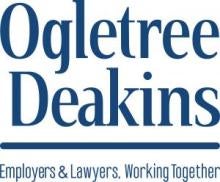Connecticut employers, take note: Public Act No. 25-30/S.B. No. 1221 (“An Act Making Changes to the Connecticut Retirement Security Program”), effective July 1, 2025, has introduced a new enforcement framework for the MyCTSavings retirement program and with it, financial consequences for noncompliance.
On March 24, 2022, Connecticut launched the MyCTSavings state-run retirement program. Employers with five or more employees must register with the state comptroller’s office to either enroll in the program or certify that their employer-sponsored plan meets the required standards.
Quick Hits
- Effective July 1, 2025, Connecticut’s Public Act No. 25-30/S.B. No. 1221 has introduced a three-strike enforcement process for the MyCTSavings retirement program, with escalating annual penalties for noncompliance. Penalties range from $500 to $1,500, depending on the size of the employer.
- The law continues to apply to employers with five or more employees, maintaining the same eligibility criteria and default contribution rates. Employers with qualifying retirement plans are exempt from certain requirements.
- As of July 1, 2025, Connecticut mandates auto-enrollment in the MyCTSavings program or certification of a compliant employer-sponsored plan. Employers may want to audit their enrollment procedures, update internal protocols, and ensure staff are trained to avoid violations and financial penalties.
What Has Changed
The law now establishes a three-strike enforcement process with annual penalties:
- First violation: Notice from the comptroller
- Second violation: Second notice
- Third violation: Final notice
Penalties for each year of noncompliance (after ninety or more days):
- $500 for small employers (five to twenty-four employees)
- $1,000 for medium employers (twenty-five to ninety-nine employees)
- $1,500 for large employers (one hundred or more employees)
The law also incorporates the federal Saver’s Match, allowing eligible low-income employees to receive federal contributions into their MyCTSavings accounts. The law states that the comptroller will provide an applicable retirement savings vehicle able to receive such contributions.
What Hasn’t Changed
Despite the implementation of the three-strike violation process, several key aspects remain the same:
- the law still applies to employers with five or more employees who paid at least $5,000 in wages to five or more workers;
- employees are still eligible after 120 days of employment and must be at least nineteen years old (except for personal care attendants);
- the default contribution rate remains 3 percent of wages if the employee does not make an election;
- employers that maintain any of the retirement programs described in Section 219(g)(5) of the Internal Revenue Code of 1986 (e.g., tax-qualified retirement plans such as 401(k) and pension plans, 403(b) tax-sheltered annuity plans, simplified employee pension plans, and SIMPLE plans, among others) are exempt from the requirement to provide prescribed information about the program to or enroll their employees in the MyCTSavings program;
- qualified employers are not required to contribute to employee accounts or collect program fees from participants.
Tips for Employers
As of July 1, 2025, Connecticut mandates auto-enrollment for the MyCTSavings state-run retirement program or certification that an employer’s sponsored plan meets the required standards. The law expressly incorporates the automatic enrollment requirements included in Code Section 414A(b)(3)(A) which establishes a 3 percent minimum and a 10 percent maximum default contribution rate and a contribution escalator that automatically steps up default contributions in 1 percent annual increments to at least 10 percent but not more than 15 percent absent affirmative direction from the employee.
To ensure compliance, covered employers may want to consider auditing their enrollment procedures. This may involve updating existing internal protocols, keeping track of compliance deadlines to prevent the issuance of violations and financial penalties, and reviewing and updating enrollment policies and processes. Retraining and educating staff responsible for these processes is crucial to compliance.





 />i
/>i

